Special Studies
Advanced Technology for Precise Diagnosis
Specialized Studies are a cornerstone in medical diagnosis and treatment. These studies encompass a wide range of advanced techniques such as electromyography, visual and auditory evoked potentials, electroencephalograms, electrocardiograms, Fibroscan, pH metries, manometries, and transcranial magnetic stimulation (TMS).
Variety of Specialized Studies
The variety of these studies allows physicians to explore neurological and cardiac function as well as gastrointestinal and liver health. Each technique provides specific and crucial information that not only aids in the precise diagnosis of complex medical conditions but also guides the development of personalized treatment plans.
Benefits for Patients
From faster and more accurate diagnoses to the ability to detect health problems at early stages, these studies improve the chances of effective treatment and successful recovery. Additionally, by conducting these studies in a hospital setting, patients benefit from coordinated care and the expert attention of multidisciplinary teams.
Fibroscan
A non-invasive tool that measures liver stiffness, detecting and evaluating liver diseases with high precision and speed, helping to avoid unnecessary liver biopsies.
Inbody Scale
Measures body composition, analyzing fat, muscle, and body water for precise health status control and treatment planning, used in weight loss and rehabilitation programs.
Extracorporeal Membrane Oxygenation (ECMO)
Provides life support to patients with severe cardiac or respiratory failure, oxygenating blood outside the body, crucial in emergency and intensive care situations.
Spirometer
Measures lung capacity and flow, helping diagnose and monitor respiratory diseases like asthma and COPD, essential for evaluating lung function pre- and post-operatively.
Chest Compressor (LUCAS)
An automated device that performs continuous and efficient chest compressions during CPR, improving survival rates in cardiac arrests.
Prisma Flex System for Critical Care
Used in renal replacement therapy and fluid management in critical patients, offering precise and personalized therapy, vital for treating acute kidney failure.
Penumbra
A thrombectomy device used to remove blood clots in patients with ischemic stroke, improving clinical outcomes, crucial for reducing brain damage and enhancing recovery.
Non-Invasive Monitoring with Impedance Plethysmography
A technique that measures changes in blood volume and flow, providing vital information on cardiac and circulatory function, helping manage heart failure patients.
Ankle-Brachial Index Measurement
A non-invasive test that compares blood pressure in the ankle and arm to detect peripheral artery disease, important for cardiovascular risk assessment.
Ambulatory Blood Pressure Monitoring (ABPM)
Measures blood pressure over 24 hours, providing a detailed profile of the patient's blood pressure in daily life, helping adjust antihypertensive treatments.
Holter Monitor
A portable device that continuously records the heart's electrical activity for 24-48 hours, helping detect arrhythmias and other cardiac anomalies, essential for diagnosing unexplained palpitations and fainting.
Visual and Auditory Evoked Potentials
Neurophysiological tests that evaluate the response of sensory nerves to visual and auditory stimuli, aiding in diagnosing conditions like multiple sclerosis and optic and auditory neuropathies.
Electrocardiogram (ECG)
Records the heart's electrical activity, allowing detection of arrhythmias, heart attacks, and other cardiac conditions, a basic tool in the initial evaluation of heart problems.
Echocardiogram with Myocardial Strain Analysis
Measures the movement and deformation of the myocardium, providing detailed information on heart function, crucial for evaluating ventricular function in cardiomyopathies.
Temporary Pacemakers
Devices that temporarily regulate heart rhythm in patients with bradycardia or heart block until a permanent pacemaker is implanted, vital in cardiac emergencies.
Fractional Flow Reserve (FFR)
A technique that evaluates the severity of coronary stenoses by measuring pressure and blood flow in the coronary arteries, helping decide the need for interventions like angioplasty or bypass.
Intra-Aortic Balloon Pump
A device used in intra-aortic counterpulsation therapy to improve blood flow and reduce the heart's workload in patients with heart failure, essential in managing cardiogenic shock.
PCR Thermocyclers
Equipment that amplifies DNA sequences to detect and diagnose viral, bacterial, and genetic infections, fundamental in the rapid identification of pathogens.
FilmArray (Viral DNA Detection)
A rapid diagnostic system that detects multiple viral pathogens in a single test, providing quick and accurate results for managing infectious diseases, crucial for outbreak and epidemic control.

